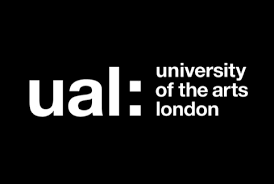CREATIVITY FOR SCRIPTWRITERS 1 day course London Saturday Nov 15th
A course for scriptwriters in all media – TV, film, radio, theatre – designed to help you generate exciting ideas and characters, and give your creativity a boost with a day of fun, stimulating writing exercises. Run by TV drama script editor, producer and script consultant PHILIP SHELLEY with guest speaker writer CAT JONES.
http://www.script-consultant.co.uk/training/
Hi There,
AMERICAN STORY-TELLING Part 2
To return to my US trip (not meaning to gloat) it was great to have a month away from my script-reading work and to be able to recharge the batteries by reading novels purely for pleasure (NB not that I don’t get pleasure from a lot of the scripts that I read!). Being in the US I thought I’d read some US novels – mostly pretty obscure books that I hadn’t heard of before – but I came across a couple of gems of story-telling.
In particular – THE MEMORY OF RUNNING by RON MCLARTY. For the most part this is a ‘road novel’ (which would make a great ‘road movie’) about an overweight, alcoholic 43 year old loser’s journey of redemption as he cycles east to west across the USA. As well as being beautifully written and a great story, this particularly resonated with me as the hero, Smithy Ide’s, journey by coincidence followed the journey I was on as I was reading (that is – my actual physical journey, not my journey of redemption – that’s yet to happen). The main difference being Smithy Ide travels by bicycle, I was in an RV! He passed through Kingman, Arizona shortly before I was there; and I read the last 50 pages of the book, in which he arrives at journey’s end on the Californian coast, and cycles on the bike path between Santa Monica and Venice beach, the day after I’d run down the very same path. Spooky!
The book is a wonderful character study and a hugely engaging narrative – I recommend it! The brilliance of its story-telling has lessons for screenwriting – or narrative in any medium.
The other outstanding US novel I read was THE BOOK OF JONAS by STEPHEN DAU. The story of an 18 year old male from an unnamed African country, whose life is saved by a US soldier after a brutal, misjudged US attack on his village; of the young man’s subsequent life as a refugee in Pennsylvania, his meeting and relationship with the (now) dead soldier’s mother; but mainly it’s about the young hero’s demons – how he has to face up to building a new life alone in the US while failing to come to terms with the events around the attack on his village. There is a spare, poetic quality to the writing – but again this is a brilliant (and accessible) piece of story-telling that tackles huge, topical, international issues through the prism of one very specific, minutely-observed character’s perspective.
From the sublime to the, well, not at all sublime.
LUCY
We had one wet afternoon in the attractive town of Flagstaff Arizona where we decided to visit the local multiplex. There was a choice of about 6 or 7 films that fitted our timetable, none of which really grabbed us, and eventually we settled on LUCY.
One of the things that struck me about this multiplex is that it was pretty much the same as my local Vue cinema in North Finchley (as was the Century cinema in Albuquerque where I saw the brilliant BOYHOOD) – and much like so many ‘mall’ cinemas all round the world. But even more depressing is the globalisation of international cinema. Not only do all these cinemas all round the developed world look the same – they show the same films. I don’t know about you but at any one time there is rarely a single film I’m interested in seeing at my local multiplex. It seems to me that the range of films being shown has narrowed alarmingly over the last decade or so. It’s not that a lot of really good films aren’t still being made, but usually I only get to see them at festivals such as London Sundance and the London Film Festival, on Netflix or occasionally on TV. What is alarming is that many of the quality, small-scale films with real intelligence and human interest either aren’t getting a UK distribution deal at all or are being shown for an extremely limited time (1 or 2 weeks) on very few screens and often not at all outside of London, and make no impression whatsoever up against the marketing might of utter crap like LUCY. I’m not only talking about foreign language films – but even accessible, quality, low budget populist US films like THE SESSIONS and THEY CAME TOGETHER. THE SESSIONS – a wonderful, sensitive, gripping film, which I saw originally at the LFF and which I re-viewed recently on US TV. As I remember, on release in the UK this film made no impression whatsoever but IMO this is far superior to most of the recent Oscar-nominated films (AMERICAN HUSTLE? Really?!)
And THEY CAME TOGETHER is a good case-in-point. It was released in the UK last Friday Sept 5th. It got a few lukewarm reviews in the national press (the critics are wrong – it’s HILARIOUS and very smart – but then being genuinely funny doesn’t seem to be a reason for most snotty London critics to review a film positively). Checking the London cinema listings I see that the ONLY London cinema the film was showing at yesterday – a mere 6 days after release – was the Showcase Cinema Newham! Today, Friday, it’s nowhere to be seen. I reckon, if it had the marketing budget of the execrable LUCY, it could have been a big hit. And there are so many examples of outstanding movies like this that we never see in the UK.
So – LUCY.
On top of the fact that none of them enjoyed it, my family mainly regretted going to this film because they had to listen to me sounding off about it in a monologue diatribe for the next hour. I found this film objectionable on several levels. Strangely the first 10 minutes weren’t at all bad. An efficient thriller that kicked in with pace and set up its story well. But after that first 10 minutes, the ‘high-concept’ element took over and the film descended into pseudo-scientific, intelligence-insulting nonsense.
Here are the ways in which I found it offensive! :-
- The ‘scientific’ justification / catalyst for the events of the story was lame in the extreme, the exposition so full of ludicrous holes.
- It was deeply xenophobic – US imperialist film-making at its worst. The film opened in Taiwan and all the gun-toting baddies were vicious sub-titled Taiwanese. Just in case Middle America hadn’t got it already – FOREIGNERS ARE EVIL. Oh yes, and there was also the obligatory cliché villainous Brit (the excellent and very wasted Julian Rhind-Tutt).
- The violence. Multiple shootings from beginning to end, ludicrous car chases all beautifully choreographed and CGI-ed, so many deaths and horrible injuries – and all mind-numbingly meaningless and inconsequential. ie the definition of gratuitous violence.
- The complete lack of humanity or recognisable human qualities – not a single, plausible, three-dimensional character whom you could care about.
- The utter waste of money. Huge casts of extras, huge set-ups, huge pyrotechnics – most of which were to do with mindless violence and were completely without story meaning.
And yet, despite the vast budget this film must have had (in production and marketing), no-one seemed to have bothered about the most important element – the SCRIPT! Risible line followed risible line. The amount of cash flushed down the toilet on this film could have funded any number of mid- or low-budget scripts that had humanity, quality, etc. Now perhaps you can begin to sympathise with some of what my family had to put up with after the film!
——————————–
TWO DAYS ONE NIGHT
The antithesis of the noise and empty spectacle of LUCY. Superficially very simple – one of the things that was striking about the film was the lack of a composed music score – this was nonetheless profound and universal. Determinedly low-concept, but as the film develops, you’re increasingly drawn into the protagonist’s life. A deceptively simple and straightforward dramatic premise – when I realised what this was about initially, I thought, ‘Well, what’s at stake here?’ But it really does have a powerful punch. The dramatic action is almost repetitive but this somehow works – and I found it a wonderful antidote to LUCY, that reminds you that story-telling at its best doesn’t need to be about guns, car crashes and absurd futuristic sci-fi.
———————————–
Finally, a tongue-in-cheek (and anonymous!) response to my BREAKING BAD musings from last week – that also identifies some interesting story archetypes!
‘Dear Philip
Your comments on Breaking Bad were mildly interesting, but it seems clear you’ve missed the real point. Never mind teddy bear motifs or location availability. A close textual reading reveals that BB is Gilligan’s homage to the Sixties comic book dynamic duo Batman & Robin. Indeed it could be argued that Gilligan’s allusions and parallels to the 1960s kitsch crime crusaders are the most important element of Breaking Bad’s narrative structure.
Consider:
Mild-mannered Bruce Wayne has an alter ego, the Batman; mild-mannered chemistry teacher Walter White creates an alter ego in Heisenberg.
Both Batman and Walt are responsible for younger men: Batman has his ‘Youthful Ward’, Robin; Walt has the feckless Jesse.
Both Batman and Walt have a personal assistant who knows the true identity of the protagonist: Batman has Alfred, Walt has Saul. [Q: Who got the better deal ?]
Both characters utilise a uniquely modified form of transport to facilitate their unusual line of work: exhibit a) the Batmobile; exhibit b) Walt & Jesse’s Winnebago.
Both have a secret subterranean lair from which they conduct operations. Batman has the Bat Cave, Walt has his underground lab.*
Both have the latest hi-tech devices to help them achieve their aims: Batman has all manner of handy devices attached to his belt; Walt has every piece of lab equipment he could dream of, courtesy of Gus Fring.
Each week, Batman and Robin overcome colourful charismatic villains by guile and knock-out punches.
Each week, Jesse and Walt overcome colourful charismatic villains by guile and knock-out drugs. But mostly by guns.
I could go on: the hazmat protection suits that clearly parallel the capes; Walt’s black hat and Batman’s black mask; the out-of-the-loop police man (Chief O’Hara/Hank Schrader).
Makes you think, doesn’t it ?
* see also my book Gilligan’s Island and Prospero’s Cell: Signifiers and Signified in Shakespearean Sixties Sitcom’
Until next week,
All the best
Phil
PHILIP SHELLEY
Twitter: @PhilipShelley1
Sept 12th 2014






















